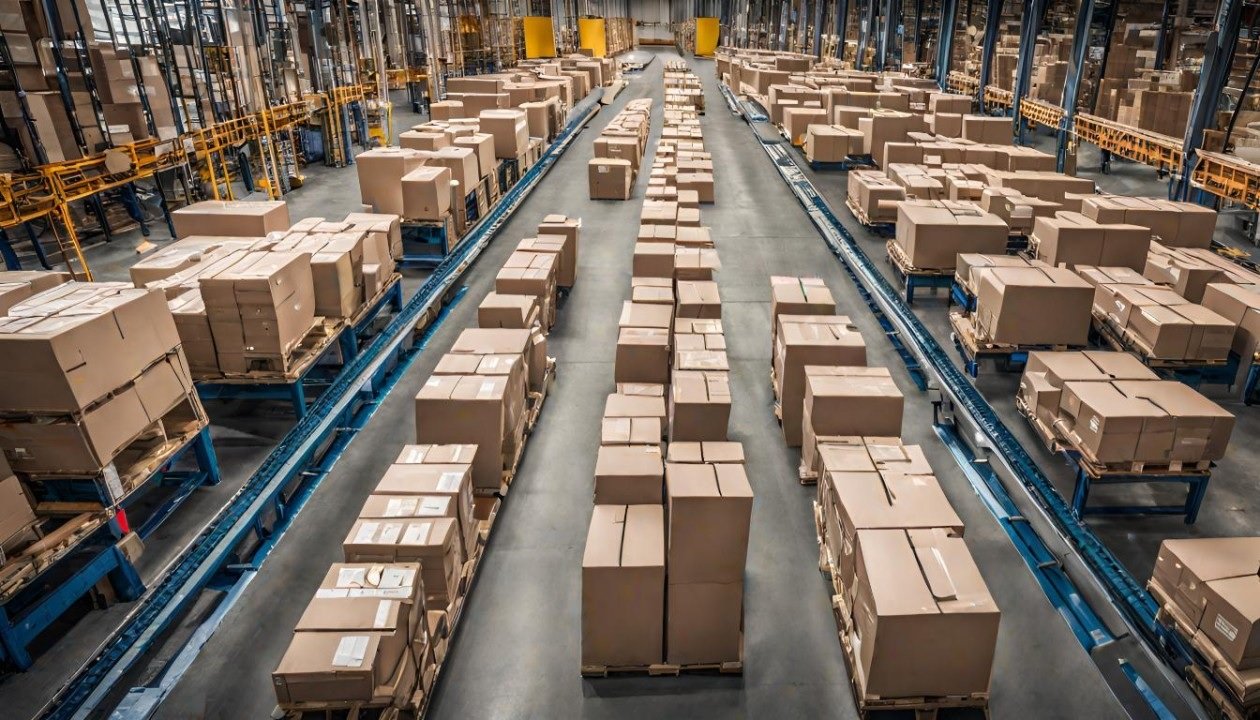The logistics industry is changing rapidly, and warehouse automation is at the forefront of this transformation. As businesses seek faster, more accurate, and cost-effective ways to manage product storage, handling, and shipping, automated solutions have become essential. But what exactly does the future of warehouse automation look like? In this article, we’ll explore how emerging technologies are reshaping logistics operations and offer insights for businesses aiming to stay competitive. Ready to dive in?
Robotics: Revolutionizing Picking and Packing
Imagine a warehouse where robots seamlessly pick and pack orders alongside human workers. That’s not science fiction—it’s already happening. Robotics is one of the most significant advancements in warehouse automation, and it’s only going to become more prevalent. Automated guided vehicles (AGVs) and autonomous mobile robots (AMRs) can transport goods around the warehouse, reducing the time and effort needed for manual handling. Robotic arms and sortation systems are now capable of picking, packing, and even labeling items with precision. This kind of automation not only speeds up processes but also reduces errors, leading to happier customers and lower costs. As robots get smarter and more adaptable, we can expect them to handle a wider variety of tasks, making warehouses faster and more efficient.
Artificial Intelligence for Smarter Decision-Making
Artificial intelligence (AI) is more than just a buzzword; it’s a powerful tool that’s reshaping logistics management. AI algorithms analyze massive amounts of data to improve decision-making, from predicting demand to optimizing delivery routes. In warehouses, AI can enhance everything from inventory management to picking routes. Imagine an AI-driven system that knows exactly where to store fast-moving items for quicker access or can suggest the most efficient way to pack a truck, down to how many pallets fit in a truck based on specific dimensions and weight constraints. AI’s ability to learn and adapt in real-time means that as it’s integrated into warehouse operations, it will continuously refine processes, making them smarter and more cost-effective.
Automated Storage and Retrieval Systems (ASRS)
Automated Storage and Retrieval Systems (ASRS) are becoming a staple in large warehouses, and for good reason. These systems use cranes, shuttles, and conveyors to store and retrieve products quickly and efficiently. With ASRS, goods are stored in high-density racks that maximize vertical space, often reaching heights that human workers can’t easily access. The result? More efficient use of space, faster retrieval times, and reduced labor costs. While these systems require a significant initial investment, the return is substantial—especially for businesses dealing with large volumes of inventory. As technology advances, we can expect ASRS to become more affordable and customizable, making it an appealing option for businesses of all sizes.
The Role of IoT in Real-Time Tracking
The Internet of Things (IoT) is adding a new layer of connectivity to warehouses. IoT-enabled sensors and devices provide real-time data about the location, temperature, and condition of products. This level of visibility helps businesses manage inventory more effectively, ensuring that products are where they need to be, when they need to be there. IoT also plays a critical role in maintenance, alerting managers to potential equipment issues before they become major problems. This predictive maintenance can reduce downtime, keeping operations running smoothly. As IoT technology continues to evolve, expect to see more advanced tracking, smarter inventory management, and enhanced safety measures in warehouses.
Drones for Inventory Management
Drones aren’t just for delivering packages; they’re becoming valuable tools inside warehouses, too. Equipped with cameras and sensors, drones can scan barcodes, conduct inventory counts, and even inspect high shelves that are hard to reach. Drones can complete these tasks in a fraction of the time it takes human workers, making them a game-changer for inventory management. Additionally, drones can quickly verify stock levels, reducing the chances of stockouts and ensuring orders are fulfilled on time. While regulations and costs are still a barrier to widespread adoption, the technology is developing rapidly, and we can expect to see more drones buzzing around warehouses soon.
Human-Robot Collaboration: A Balanced Approach
Despite the rise of automation, humans aren’t going anywhere. The future of warehouse automation lies in collaboration between humans and machines. Robots can handle repetitive tasks and heavy lifting, while humans focus on complex decision-making, problem-solving, and quality control. This approach not only improves efficiency but also enhances worker safety, as robots can take over potentially dangerous tasks. To ensure smooth collaboration, businesses need to invest in training programs that help employees understand how to work alongside automated systems effectively. This “cobotics” (collaborative robotics) approach is likely to be the most sustainable way forward, blending human intuition with machine precision.
Autonomous Vehicles for Faster Shipping
Autonomous vehicles, including self-driving trucks and delivery robots, are set to redefine logistics. In warehouses, autonomous forklifts and pallet movers are already making operations faster and more efficient. These vehicles use sensors, cameras, and AI to navigate warehouses safely, reducing the risk of accidents and increasing speed. For last-mile delivery, autonomous robots can handle small package deliveries, ensuring faster service. While widespread adoption of self-driving trucks is still a few years away due to regulatory hurdles, these vehicles hold significant promise for the future of shipping. As technology advances, businesses will need to prepare for a logistics landscape that relies heavily on autonomous solutions.
Conclusion: Embracing the Future of Warehouse Automation
Warehouse automation is more than just a trend; it’s the future of logistics. From AI-enhanced decision-making to autonomous vehicles, the technologies shaping warehouses are designed to boost efficiency, cut costs, and enhance accuracy. As these innovations become more accessible, businesses of all sizes have the opportunity to optimize their product storage, management, and shipping. By embracing automation thoughtfully and strategically, companies can position themselves for long-term success in a rapidly evolving industry.



